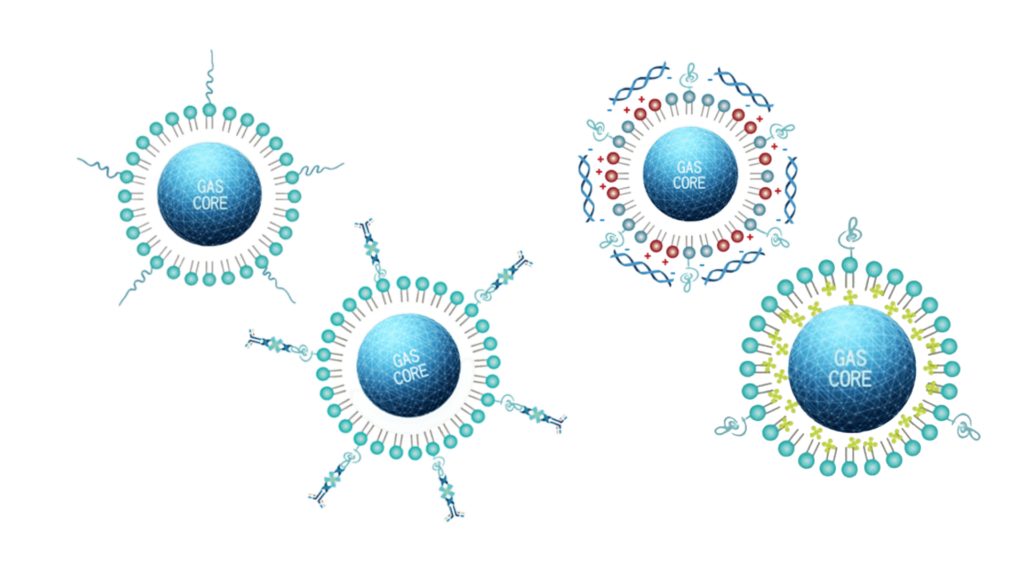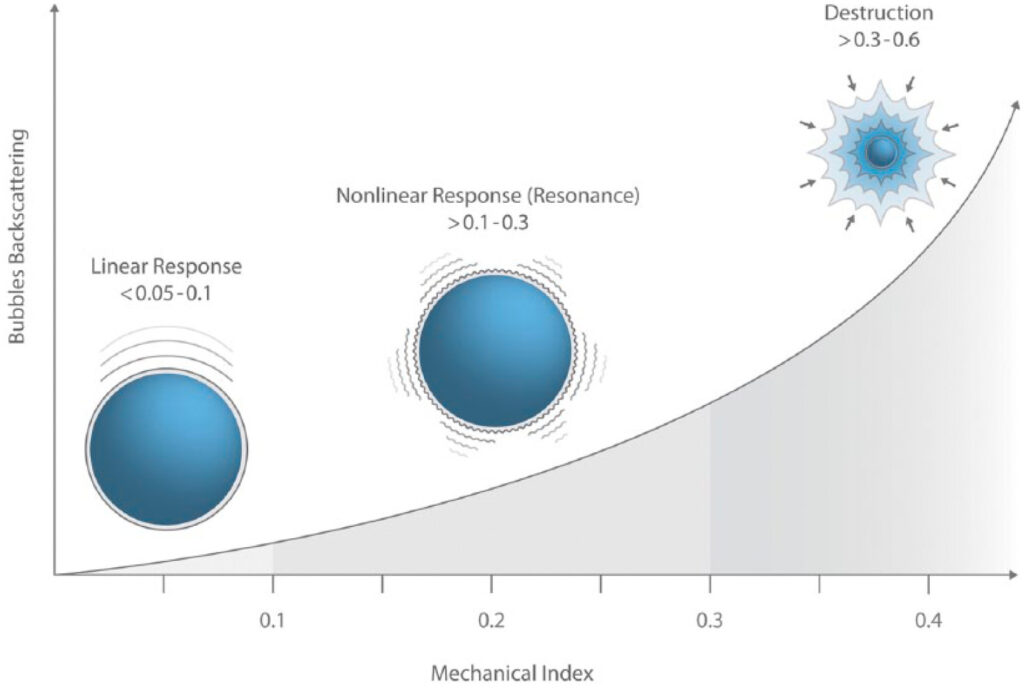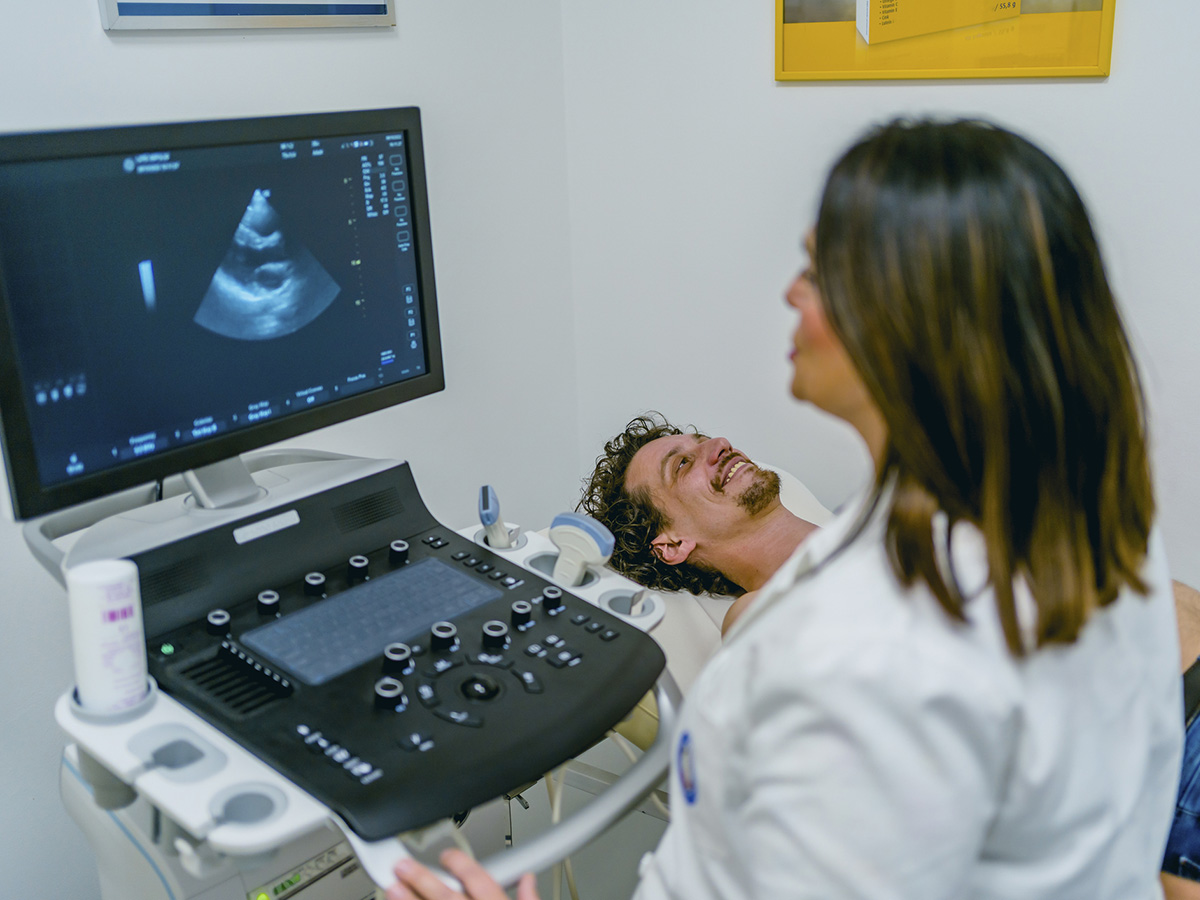Ultrasound contrast agents (UCAs) are specialized substances used in ultrasound imaging to improve the clarity, detail, and diagnostic accuracy of images. By enhancing the ultrasound signal, these agents enable healthcare providers to assess tissue structures and blood flow with improved precision, aiding in the diagnosis of a range of conditions. This page explores the types, mechanisms, and clinical uses of ultrasound contrast agents, as well as their role in enhancing ultrasound imaging quality.
What Are Ultrasound Contrast Agents?
Ultrasound contrast agents are microbubble-based substances that reflect ultrasound waves, creating higher-quality images. When injected into the bloodstream or a specific body cavity, these agents amplify the ultrasound signal, resulting in clearer visualization of blood vessels, tissues, and organ structures. UCAs are often used in procedures that require detailed imaging of blood flow, the cardiovascular system, and specific organ functions.
How Do Ultrasound Contrast Agents Work?
Ultrasound contrast agents consist of microscopic bubbles filled with gas, typically encapsulated by a lipid, protein, or polymer shell. When exposed to ultrasound waves, these microbubbles vibrate and reflect sound more effectively than body tissues, providing enhanced contrast in the resulting image. This contrast effect allows clinicians to observe small blood vessels, lesions, and flow patterns that might otherwise be challenging to see.
Types of Ultrasound Contrast Agents
Microbubble Contrast Agents
The most common type of UCA, microbubble agents are used to enhance vascular and tissue imaging. These agents are generally safe and are quickly cleared from the body, making them ideal for real-time imaging of blood flow in organs such as the liver, heart, and kidneys.
Tissue-Specific Contrast Agents
These agents are designed to target specific types of tissue, such as liver or cardiac tissue. By binding to certain cellular components, they offer enhanced imaging of targeted areas and are valuable in identifying lesions, tumors, and other structural abnormalities.
Lipid- or Protein-Based Contrast Agents
Some UCAs are encapsulated in a lipid or protein shell, making them stable and effective for longer imaging procedures. These agents are often used when continuous monitoring of blood flow is necessary.
Benefits of Using Ultrasound Contrast Agents
The use of contrast agents in ultrasound provides several benefits, including:
- Enhanced Image Quality: UCAs increase the visibility of small structures and detailed features within tissues, improving diagnostic accuracy.
- Non-Invasive Procedure: Unlike some other imaging methods, contrast-enhanced ultrasound is minimally invasive and does not require radiation exposure.
- Real-Time Imaging: Ultrasound with contrast agents allows for real-time observation of organ function and blood flow, aiding in dynamic assessments and procedures.
- Improved Detection of Lesions and Tumors: UCAs enable more precise detection of liver lesions, cardiac abnormalities, and other structural changes that may require targeted treatment.

Clinical Applications of Ultrasound Contrast Agents
Cardiac Imaging
In cardiology, ultrasound contrast agents are used to assess myocardial perfusion, visualize heart chambers, and detect wall-motion abnormalities. Enhanced imaging allows cardiologists to identify issues like ischemia and heart defects more accurately.
Liver and Abdominal Imaging
UCAs are frequently used to detect liver lesions and monitor blood flow within the liver and abdominal organs. This is especially beneficial for patients with liver disease, as contrast-enhanced ultrasound can help detect and monitor tumors, cysts, and cirrhotic changes.
Oncology
For cancer diagnosis, UCAs improve visualization of tumors and their vascularity. This allows oncologists to differentiate between benign and malignant growths and monitor treatment response over time.
Kidney Imaging
Ultrasound contrast agents aid in visualizing kidney structure and function, helping in the diagnosis of renal lesions, cysts, and other conditions. With improved clarity, renal blood flow patterns and structural abnormalities can be evaluated more effectively.
See Also – Ultrasound Artifacts: Understanding, Types, and Clinical Relevance
How Safe Are Ultrasound Contrast Agents?
Ultrasound contrast agents are considered safe, with minimal risk of side effects. Since they are gas-filled microbubbles and contain no radiation, they are generally well-tolerated by most patients. Adverse reactions are rare but can include mild allergic responses. As a precaution, medical professionals screen patients for any contraindications before administering contrast agents. Compared to contrast agents used in CT or MRI, UCAs have a lower incidence of adverse effects.

Tips for Effective Use of Ultrasound Contrast Agents
- Choose the Right Agent for the Examination: Selecting a contrast agent based on the target organ or condition can optimize imaging results.
- Adjust Equipment Settings: Ultrasound machines often have specific settings for contrast-enhanced imaging. Adjusting these settings ensures the highest quality image capture.
- Time the Injection Precisely: Administering UCAs at the correct time allows for the best real-time visualization of blood flow and tissue structure.
- Monitor Patient Reactions: While adverse reactions are rare, monitoring patients during and after the procedure ensures prompt response to any symptoms.
Limitations of Ultrasound Contrast Agents
While UCAs offer numerous advantages, some limitations exist:
- Short Duration: Microbubble contrast agents typically have a brief imaging window, requiring precise timing and quick observation.
- Limited Depth Penetration: UCAs may be less effective for imaging deeper structures, as the microbubbles may not reach these areas.
- Technique Sensitivity: Achieving optimal results with UCAs requires skilled handling of the ultrasound device, including adjustment of machine settings and probe positioning.
Future Developments in Ultrasound Contrast Agents
As technology advances, ultrasound contrast agents are continuously improving. Current research is focused on developing more targeted and longer-lasting agents to improve diagnostic capabilities further. Innovations such as targeted contrast agents, which bind to specific molecular markers, hold promise for enhanced precision in detecting cancer and vascular diseases. The use of ultrasound contrast agents will likely expand as new formulations and applications are developed, bringing added value to diagnostic imaging.
Conclusion: The Role of Ultrasound Contrast Agents in Modern Medical Imaging
Ultrasound contrast agents are revolutionizing the field of diagnostic imaging by providing detailed, real-time views of bodily structures and functions without the risks associated with radiation. Their ability to enhance image quality and reveal intricate details has made them invaluable in a variety of medical fields, from cardiology to oncology. Learn more about how contrast agents and advanced ultrasound techniques are shaping the future of diagnostic imaging here at US Tip.

